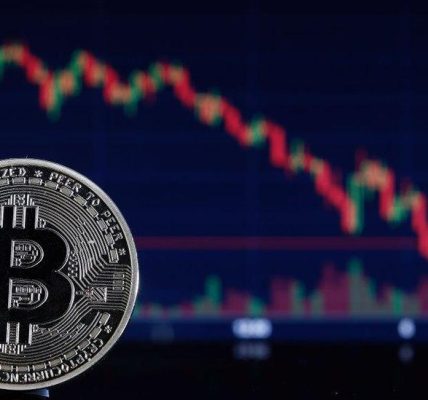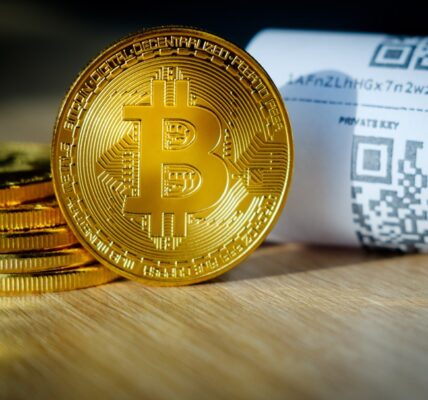- Homepage
- Crypto Trading
- Crypto Trading: Navigating the High-Stakes World of Digital Assets
Crypto Trading: Navigating the High-Stakes World of Digital Assets
Introduction: A New Era of Markets
Once confined to the fringes of the internet, cryptocurrency trading has surged into the mainstream as a dynamic and sometimes dizzying frontier of modern finance. With Bitcoin’s spectacular ascent paving the way, millions have been drawn into this new digital marketplace where opportunity and risk intermingle in ways traditional markets can scarcely match. Yet, behind the screens of rapid price swings and overnight millionaires lies a deeper story of technological innovation, shifting economic power, and the redefinition of what it means to trade
The Evolution of Crypto Trading: From Novelty to Necessity
Crypto trading was born in online forums and chat rooms, where early adopters swapped Bitcoin and other tokens more as curiosities than investments. The 2017 bull run changed that narrative dramatically. Bitcoin’s meteoric rise to nearly $20,000 grabbed headlines, luring institutional players, venture capital, and retail traders alike. Since then, the market has matured, with advanced exchanges, sophisticated trading tools, and a growing ecosystem of services that rival traditional finance
What began as a fringe experiment has evolved into a trillion-dollar industry challenging how value is stored, transferred, and speculated upon
Understanding the Basics: How Crypto Trading Works
At its core, crypto trading is the buying and selling of digital currencies through online exchanges. Unlike traditional stock markets with fixed trading hours, crypto markets operate 24/7, adding an extra layer of complexity—and excitement—for traders worldwide
Key elements include
-
Exchanges: Platforms like Binance, Coinbase, and Kraken act as marketplaces where buyers and sellers meet
-
Pairs: Traders speculate on currency pairs, such as BTC/USD or ETH/BTC, aiming to profit from price fluctuations
-
Wallets: Crypto must be stored securely, often in a digital wallet that can be either custodial (managed by an exchange) or non-custodial (self-managed by the user)
-
Orders: Traders use market orders, limit orders, and stop-losses to manage entry and exit points strategically
These basics form the foundation, but the strategies and risks can grow infinitely more complex
Spot vs. Derivatives: The Tools of the Trade
Crypto trading today extends far beyond simple buying and holding. Derivatives markets have exploded in popularity, offering instruments such as futures, options, and perpetual swaps that allow traders to speculate on price movements without owning the underlying asset
Some distinctions include
-
Spot Trading: Buying or selling the actual asset for immediate settlement
-
Margin Trading: Borrowing funds to amplify potential returns—along with potential losses
-
Futures and Options: Contracts that let traders bet on future price movements, hedge existing positions, or leverage capital
These tools attract seasoned traders seeking high returns but require a sophisticated understanding of market dynamics and risk management
Volatility: Both Friend and Foe
One of crypto trading’s most defining features is its wild volatility. Price swings of 10% in a single day are not uncommon. While traditional investors might recoil, experienced traders see this as fertile ground for profit—if they have the discipline to manage risk
Volatility’s double-edged nature means that fortunes can be made or lost in hours. This reality has given rise to the famous cautionary saying: “Never trade more than you can afford to lose”
Technical and Fundamental Analysis: The Trader’s Compass
Successful crypto traders rely on a blend of technical and fundamental analysis to navigate turbulent markets
-
Technical Analysis (TA): Involves studying charts, patterns, and indicators to predict price movements. Popular tools include moving averages, RSI (Relative Strength Index), and Fibonacci retracements
-
Fundamental Analysis (FA): Looks at the broader picture—project utility, team credentials, partnerships, and market sentiment. Understanding a coin’s real-world use case can guide long-term positions
Balancing these approaches helps traders make informed decisions rather than relying on hype and speculation alone
The Rise of Algorithmic Trading and Bots
As the market has matured, algorithmic trading—once the preserve of Wall Street—has found a home in crypto. Bots can execute trades at lightning speed, removing emotion from decision-making and capitalising on minute market inefficiencies
While this levels the playing field for those with the right tools, it also raises the stakes for retail traders competing against automated strategies that never sleep
Risk Management: The Unsung Hero of Successful Trading
If there is one golden rule in crypto trading, it is that risk management is non-negotiable. The stories of lost fortunes often stem not from bad calls but from over-leveraging and poor discipline
Essential risk practices include
-
Position Sizing: Only risking a small percentage of capital on a single trade
-
Stop-Loss Orders: Automatically closing losing positions before they spiral out of control
-
Diversification: Avoiding putting all funds into a single coin or strategy
Smart traders know that survival is success. The goal is not just to win big, but to stay in the game long enough for the odds to work in your favour
Regulatory Crossroads: The Unfinished Story
Crypto trading exists in a regulatory grey area in many parts of the world. Some countries have embraced it as innovation; others have imposed bans or heavy restrictions, citing concerns about money laundering, fraud, and consumer protection
How the regulatory landscape unfolds will shape the future of crypto trading. Clear rules could unlock new waves of institutional money and technological growth. Conversely, heavy-handed crackdowns might push trading further into the shadows
The Human Element: Emotion, Community, and Culture
Unlike traditional markets, crypto trading has cultivated a unique culture. Online communities on Twitter, Discord, and Telegram share memes, market tips, and heated debates. FOMO (Fear of Missing Out) and FUD (Fear, Uncertainty, Doubt) are part of the vocabulary, reminding traders that psychology is as potent a force as any chart or indicator
For many, crypto trading is not just a financial pursuit but a statement of belief in decentralisation and a more open financial system
Conclusion: A Brave New Marketplace
Crypto trading is not for the faint-hearted. It demands resilience, continuous learning, and a healthy respect for the unforgiving laws of the market. Yet for those who master its nuances, it offers possibilities unmatched by conventional finance
More than just a path to quick profits, crypto trading represents a profound shift in how value is exchanged, how technology empowers individuals, and how markets can evolve beyond borders and time zones
In the end, crypto trading is an experiment in freedom and risk—a global game of skill, strategy, and psychology that is rewriting the rules of what trading can be. As digital assets become ever more entwined with the mainstream, the traders of today stand on the frontlines of a financial revolution whose final chapter has yet to be written









